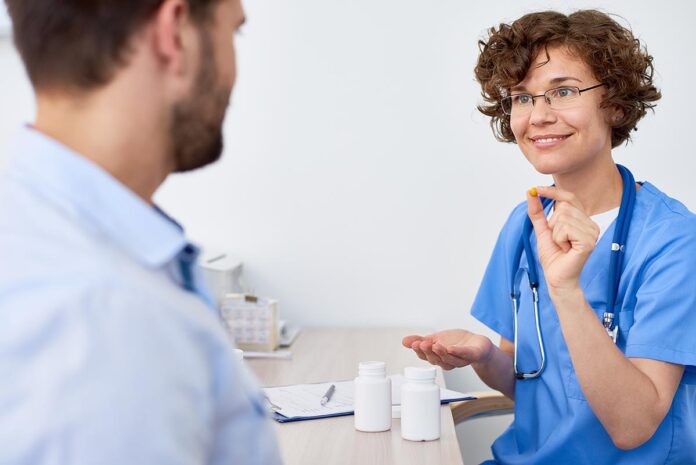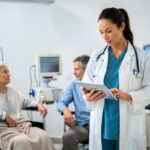Ever felt the pinch when collecting a prescription? You’re not alone. Medicine costs can sometimes feel like they’re spiraling out of control. But hang on, there’s a bit of sunshine amid the gloom: Patient Assistance Programs (or PAPs for those in the know). These programs are more than just another health care jargon; they’re genuine life-savers for many.
Getting to Know Patient Assistance Programs (PAPs)
Alright, let’s break it down. Patient Assistance Programs, PAPs are schemes that pharmaceutical giants roll out to help those feeling the weight of medication expenses. Think of them as a helping hand when insurance falls short or is non-existent. They’re not brand new; they’ve been lurking in the backdrop for years. Their mission? Simple. Ensure that every person, regardless of their financial situation, has access to the medicines they need without breaking the bank. It’s medicine with a touch of compassion, really.
PAPs: A Lifeline for Many Patients
Imagine a scenario where life-saving medications are just out of reach because of their cost. This is a reality for many, especially for those without insurance or with minimal coverage. But thanks to Patient Assistance Programs (PAPs), the tide is turning. PAPs play a crucial role in bridging the gap, ensuring that essential medications aren’t just for the privileged few. A real-life instance? Consider Raj, a diabetic patient without health insurance. With insulin prices skyrocketing, his situation looked bleak. But a PAP stepped in, ensuring he received his insulin doses without burning a hole in his pocket. Raj’s story isn’t unique. Across the country, countless patients breathe easier, both medically and financially, due to the support of PAPs.
The Vital Link: Healthcare Providers and PAPs
Doctors and pharmacists wear many hats. Beyond providing medical advice or dispensing drugs, they’re often the first to notice when a patient is financially struggling. Recognising this, many healthcare professionals have forged ties with PAPs. So, when a patient like a terminally ill child without insurance is in distress, they’re not just prescribed medication; they’re often directed to a PAP that can help. The referral process might involve a few forms, a bit of paperwork, and sometimes a waiting period. But the outcome — ensuring a patient doesn’t miss out on essential meds because of financial constraints or the healthcare system— makes it worthwhile. It’s a collaborative effort, with medical professionals playing a key role in connecting patients with the financial relief they need.
The Not-So-Rosy Side of PAPs
Patient Assistance Programs sound brilliant on paper, right? But let’s scratch the surface. For many, diving into PAPs feels like walking into a maze blindfolded. The endless paperwork and proving you’re in dire need? It’s exhausting. And here’s the real kicker: there’s chatter about whether these programs can truly last in the long haul. Some argue PAPs pick favorites, leaving a chunk of folks struggling.
How PAPs Shift the Healthcare Game
Imagine giving the healthcare system a much-needed caffeine boost. That’s what PAPs do. When folks can afford their meds, emergency room frenzies drop. Plus, affordability means people actually follow their doc’s advice, attend check-ups, and complete treatments. It’s not just about saving a few bucks – it’s about proactive care that benefits everyone.
The Bigger Picture: PAPs in the Healthcare Landscape
PAPs do more than just help Mr. Sharma from down the street. They’re acting like pressure valves, letting off steam from overloaded hospitals and clinics. More folks now can stick to their treatment plans, not skipping pills or appointments just to save money. The result? A healthier community and a system that can breathe a bit easier.
PAPs Tomorrow: What’s in Store?
There’s chatter about how PAPs will shape up in the coming years. While they’ve got momentum, challenges aren’t far behind. And here’s a thought – what if tech could make PAPs even more accessible? Imagine a future where a mobile app could connect patients with the right programs instantly.
Navigating the Maze of PAPs with Non-profits
Alright, so you’ve got these big pharmaceutical companies setting up Patient Assistance Programs. But, did you know there’s a kind-hearted sidekick in this story? Yep, I’m talking about non-profit organizations. Here in the U.S., these champions don’t just shout from the rooftops about PAPs; they get their hands dirty, guiding folks through the often-confusing application jungle. And sometimes, they even dip into their pockets to offer some extra cash help. It’s a team effort, really. When PAPs join hands with non-profits, it’s like a healthcare dream team, making meds more affordable for everyone.
Wrapping Up
PAPs? They’re not just programs; they’re lifelines for many. But the real magic happens when everyone – from patients to providers – comes onboard, spreading the word, and making healthcare a bit more accessible for everyone.
Did you find this article helpful? Check out the rest of our blog for more!
Read Also
- Creative Approaches to Alleviating Healthcare Staff ShortagesHospitals and clinics are facing staff shortages, which makes it harder to take care of patients well. Finding simple and useful solutions is very important. Easy changes like flexible work hours, good training, and chances to grow can help staff stay happy. Technology, like online doctor visits and helpful tools, can make work easier. Smart… Read more: Creative Approaches to Alleviating Healthcare Staff Shortages
- Understanding the Role of Sterilizers in Healthcare FacilitiesHave you ever wondered how hospitals keep their equipment safe enough to use on dozens of patients every day? Most people never think about what happens behind the scenes, yet these hidden steps play a huge role in patient safety. Sterilizers are part of that system, working quietly to remove harmful germs before any instrument… Read more: Understanding the Role of Sterilizers in Healthcare Facilities
- Building Healthcare Access Where It’s Needed Most: A Local First ApproachHealthcare shouldn’t depend on where you live. But in the U.S., it often does. If you’re in a big city, you likely have options. If you’re in a small town or an underserved neighbourhood, it’s a different story. To fix this, more healthcare leaders are turning to a local-first approach. That means putting clinics and… Read more: Building Healthcare Access Where It’s Needed Most: A Local First Approach
- Revolutionizing Patient Engagement: Innovative Solutions for Improved Care and Treatment SuccessNavigating healthcare system can often feel overwhelming for patients. Between appointments, prescriptions, and treatment regimens, it’s easy for crucial details to get lost in the shuffle. That’s why effective patient engagement and support solutions are more important than ever. Companies like Serva Health, with their pharma hub services, are stepping up to ensure that patients… Read more: Revolutionizing Patient Engagement: Innovative Solutions for Improved Care and Treatment Success
- On-Demand Healthcare Staffing As A Cost-Saving StrategyThis is an exciting and challenging time for the healthcare industry. Technology is advancing almost faster than humans can keep pace. New legislation is creating fresh challenges for the future of healthcare, and the shifting population demographic continues to place more pressure on healthcare facilities. Amidst these changes, healthcare facilities are facing a critical staffing… Read more: On-Demand Healthcare Staffing As A Cost-Saving Strategy






